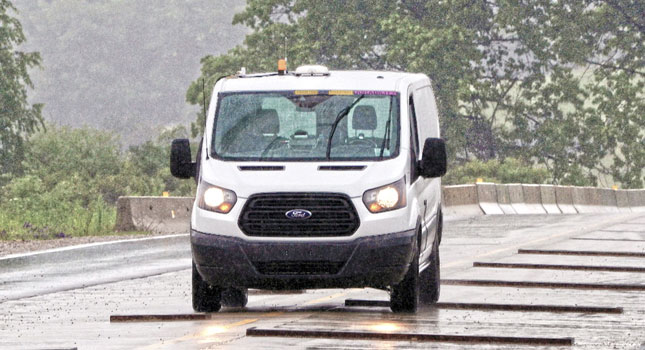The main problem with factory test drivers is the fact that they are human, and this brings along several limitations to the amount of work that can be done. For instance, some severe durability courses are so tough that drivers are only allowed to tackle them once per day.
Another problem is consistency, as it is virtually impossible to repeat a task multiple times in exactly the same way – a human driver can only be so accurate.
This is where robots come into the picture, as they do not require rest and can perform these repeated durability tests far quicker and in a much more accurate manner. Ford is trying this out with the 2014 Transit, which is coming to the US next year. They say these self-driving vans are GPS-guided and autonomous – this allows up to eight to be remotely controlled by a single operator.
Blue Oval officials say that in this way, they will speed up development of future vehicles, and subject them to even tougher tests, possibly even ones humans aren’t necessarily supposed to walk out of in one piece…
Safety is another area this could be used, and it actually already is, as Euro NCAP uses a similar robotics system to try out Stability Control systems – all the vehicles tested must pass a simulated elk test that is performed remotely, and in this way all cars are trialed in the same way, and more accurate judgments can be made.
Actually, this makes a bit more sense than self-driving cars on the public roads, as an immediate use for the tech, with genuine benefits. Ford themselves admit that this is in no way a system destined to end up on any production car soon, being specifically designed for its current application.
By Andrei Nedelea
PHOTO GALLERY








